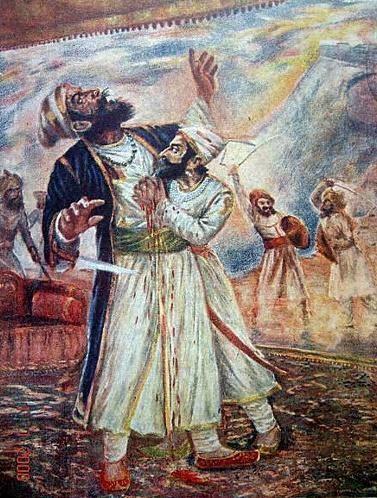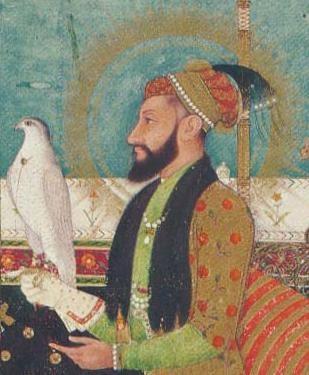PDF chapter test TRY NOW
Consolidation of the empire
- Shivaji resumed his military activities post the death of Mohammad AdilShah of Bijapur in \(1656\). He was succeeded by AdilShah II, who was defeated by Shivaji. He also went on to defeat the small Kingdoms and extended his suzerainty over them.
- Shivaji also went on capture the fort of Bijapur and replaced the soldiers of Sultan with his soldiers. Simultaneously Aurangaseb entered the lands of Deccan and captured the areas of Bidar, and Parinder in \(1657\).
- The expansion of Shivaji angered the Sultans and Mughal ruler who later fought with Shivaji to end his reign.
Shivaji and Afzal Khan
- After usurping his dominance over the Bijapur Fort, the Sultan of Bijapur thought of teaching a lesson to the warring Maratha ruler.
- He sent his commander Afzal Khan with a huge army and troops to capture Shivaji. He was not successful in his mission as the mountainous terrain was very difficult for the Bijapur sultan to succeed.

Shivaji Killing Afzal Khan
- The Sultan of Bijapur himself led his troop to capture Shivaji, he was also defeated by the Maratha ruler, and in a battle, Afzal Khan was also killed in \(1659\ \)by Shivaji.
The Advent of Aurangzeb
- During the rise of Shivaji in Deccan, there was a change of power in the Mughal throne as Shah Jahan fell ill and died and his throne was handed over to his son Aurangzeb.
- Aurangzeb appointed his relative Shaista Khan as the Deccan Governor in 1660 and assigned the task of ending the dominance of Shivaji.
- When Shaista Khan came face-to-face with Shivaji he was wounded by the Maratha ruler and chased him away in \(1663\), this incident made Aurangzeb recall Shaista Khan from Deccan.
The Shivaji, Aurangzeb Face-off
- To show his might the Maratha ruler attacked and plundered “Surat” a key Mughal port on the west coast of India. Irked by the actions of Shivaji, Aurangzeb sent an army under Jai Singh, a Rajput general.

Aurangzeb
- Jai Singh was handed over the task of defeating Shivaji and annexing the Bijapur Kingdom. He laid siege of the Maratha capital and also captured Purandhar in 1665.
- The Failure of tactical moves by Shivaji made him make peace with Jai Singh and he had also signed a treaty with him.
TREATY OF PURANDHAR: According to this treaty, Shivaji conceded the Purandhar fort, and also accepted to serve as a Mansabdar under the Mughal army.
The Last attempt:
- Jai Singh ordered Shivaji to visit the Palace of Mughal ruler in Agra, where he was humiliated and later he escaped. Aurangzeb decided to the end of Maratha rule in Deccan and planned an attack in \(1670\).
- Shivaji again attacked Surat in the 1670s, and this time there was no force to defend the Mughal territories as they were engaged against the Afghans in a Battle.
- Shivaji was successful in capturing Surat, which was an important part of the Mughal empire and imposed taxes on the port city. Aurangzeb’s efforts to reconcile with Shivaji also failed.
CHATTRAPATHI: Shivaji ascended the throne of Maratha in \(1674\ \)and conducted a coronation ceremony. He also went on to assume the title of “Chattrapathi” (means the Supreme King) and “Haindav Dharmodarak” (means the protector of Hindus).
Last days of Shivaji
- Shivaji’s last days ended with unhappiness as his elder son Shambhuji deserted his empire and joined hands with the Mughals. Shivaji later arrested and imprisoned his son after his return.
- Shivaji died of Prolonged illness at the age of \(53\ \)in \(1680\), at the time of his death his territory included the Western Ghats and Konkan area.
